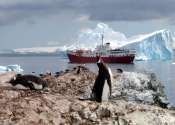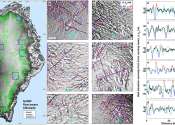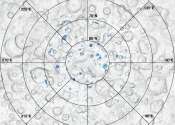Ice is a solid phase, usually crystalline, of a non-metallic substance that is liquid or gas at room temperature, such as carbon dioxide ice (dry ice), ammonia ice, or methane ice. However, the predominant use of the term ice is for water ice, technically restricted to one of the 15 known crystalline phases of water. In non-scientific contexts, the term usually means ice Ih, which is known to be the most abundant of these solid phases. It can appear transparent or opaque bluish-white colour, depending on the presence of impurities or air inclusions. The addition of other materials such as soil may further alter the appearance.
The most common phase transition to ice Ih occurs when liquid water is cooled below 0°C (273.15K, 32°F) at standard atmospheric pressure. It can also deposit from vapour with no intervening liquid phase, such as in the formation of frost.
Ice appears in nature in forms as varied as snowflakes, hail, icicles, glaciers, pack ice, and entire polar ice caps. It is an important component of the global climate, and plays an important role of the water cycle. Furthermore, ice has numerous cultural applications, from ice cooling of drinks to winter sports and the art of (ice sculpting).
The word is derived from Old English ís, which in turn stems from Proto-Germanic *isaz.









